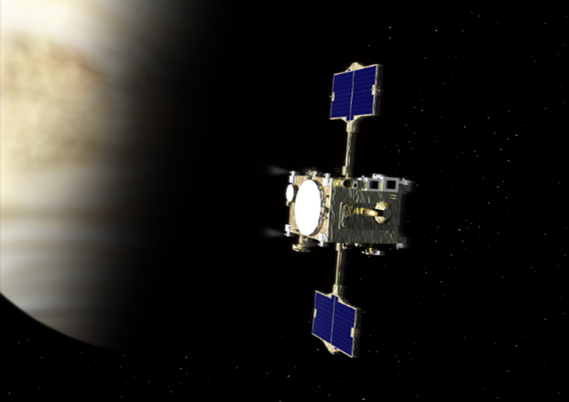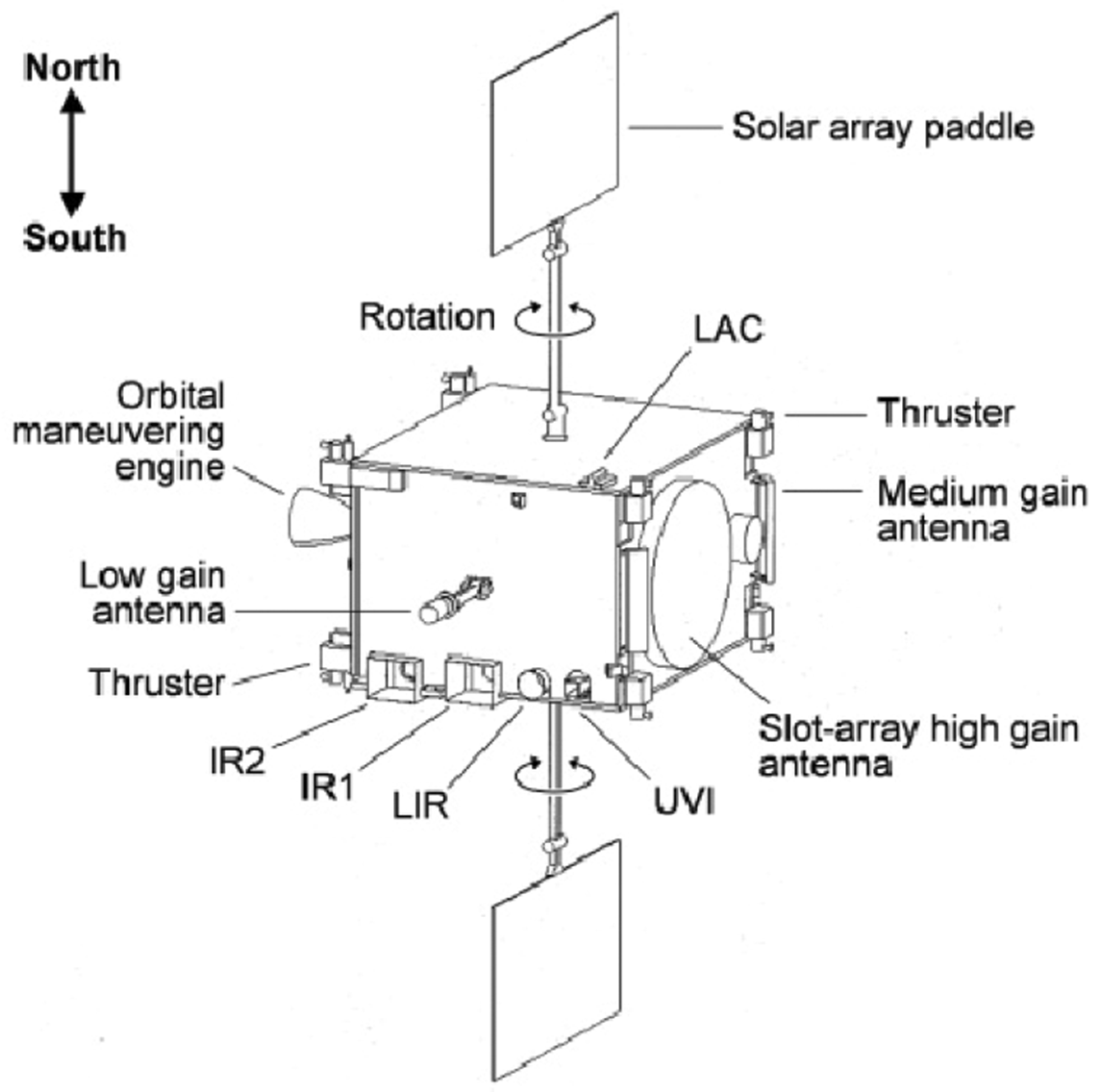Venus Climate Orbiter “AKATSUKI” Operation Completed
September 18, 2025 (JST)
Japan Aerospace Exploration Agency
The Japan Aerospace Exploration Agency (JAXA) conducted the termination procedure for the Venus Climate Orbiter “Akatsuki” (PLANET-C) starting at 9:00 AM on September 18, 2025 (JST), thereby ending the probe's operations.

© JAXA
An artist's interpretation of insertion into Venus orbit
Akatsuki was launched from the Tanegashima Space Center on May 21, 2010, aboard the H-IIA Launch Vehicle No. 17. The spacecraft successfully entered Venus orbit in December 2015, becoming Japan's first planetary orbiter beyond Earth. Since then, Akatsuki continuously observed Venus's atmosphere for more than eight years. The mission’s scientific achievements focussed on planetary meteorology and included the discovery of the largest mountain wave (stationary gravity waves) in the Solar System, the elucidation of the mechanism that maintained high-speed atmospheric circulation (super-rotation) around Venus, and the application of data assimilation techniques (popular in Earth's meteorological research) to Venus for the first time.
Communication with “Akatsuki” was lost during operations near the end of April 2024, triggered by an incident in a control mode of lower-precision attitude maintenance for a prolonged period. Although recovery operations were conducted to restore communication, there has been no luck so far. Considering the fact that the spacecraft has aged, well exceeding its designed lifetime, and was already in the late-stage operation phase, it has been decided to terminate operations.
We would like to express our deepest gratitude to all the organizations and individuals who have cooperated and supported the development and operation of Akatsuki.
Reference 1:
Major Achievements and Results of Akatsuki
For details on the major achievements and results of Akatsuki, please refer to the following materials: the Space Development and Utilization Division report, the press briefing materials, and the Akatsuki team website.
- November 29, 2018: Space Development and Utilization Division reportExternal Link(site: Japanese only)
- November 19, 2019: Press Briefing on Observation Results from the Venus Probe “Akatsuki”(site: Japanese only)
- “Akatsuki” Team Web Page
Reference 2:
Overview
| Launch | May 21, 2010, 6:58 AM (JST) | |
|---|---|---|
| Structure | Mass | Approx. 520 kg (at launch) |
| Outline | Rectangular prism: 1.0 m x 1.5 m x 1.4 m Paddles: 1.0 m x 1.4 m (2 wings)  |
|
| Orbit | Altitude | Periapsis: Approx. 1,000 km Apoapsis: Approx. 360,000 km |
| Type | Elliptical orbit around Venus | |
| Period | Approx. 11 days | |
| Primary Mission Instruments |
1 µm camera (IR1) 2 µm camera (IR2) Long-wave InfraRed camera (LIR) Ultraviolet Imager (UVI) Lightning and Airglow Camera (LAC) Ultra-Stable Oscillator (USO) |
|